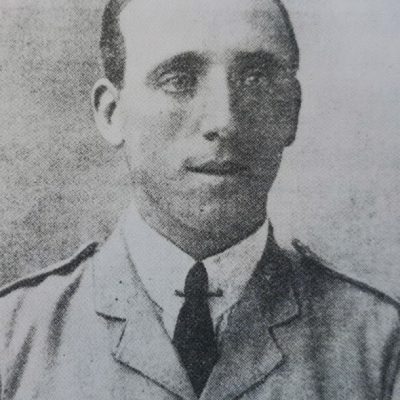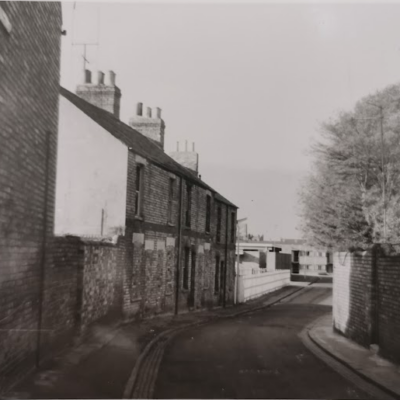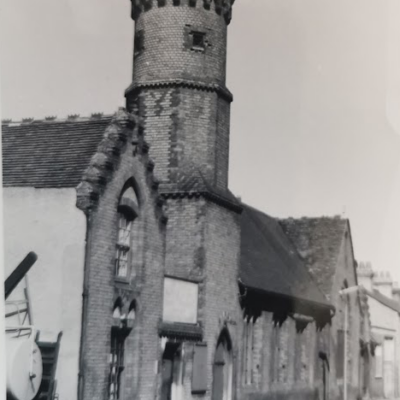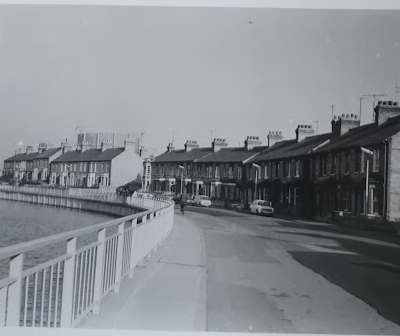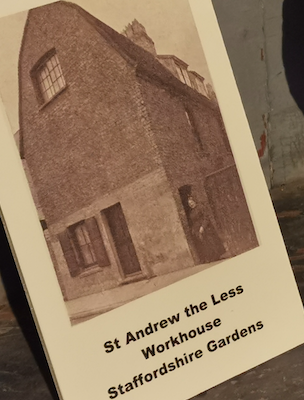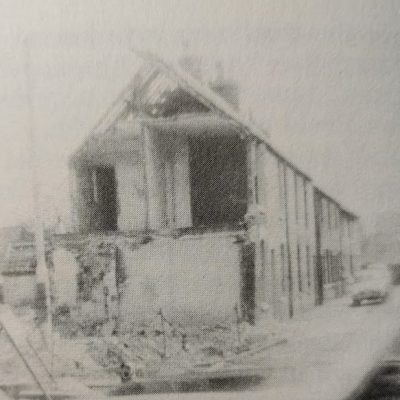Search by topic
- archaeology
- Building of Local Interest
- charity
- church
- crime
- dressmaker
- fire
- Great Eastern Railway
- Listed building
- Mapping Relief
- medieval
- oral history
- poverty
- Public House
- Rattee & Kett
- Religious House
- Roman
- scholar
- school
- Then and Now
- tudor
- women
- work
- world war one
- world war two
Search by text
Barnwell
History of Barnwell, Cambridge
A Wikipedia article about the history of Barnwell can be found here:
https://en.wikipedia.org/wiki/Barnwell,_Cambridgeshire
Royal Commission Survey of Cambridge 1959: Houses several hundreds, in the Barnwell area ….. are mostly but in terraces, often of great length, and of two storeys with Gault brick walls and slate covered roofs. the greater part of the area lay in the parish of St Andrew the Less. The Inclosure Act of 1807 and the Award of 1811, by making possible the sale and division of the open fields, resulted in the extensive building development described here. The original award and map shows Barnwell as a village with houses bordering the Main Street E and W of the church. Few of these could have antedated the fire of 1731, which destroyed fifty dwellings. Notices in the Cambridge Chronicle confirm that houses were built soon after the inclosure; their position is not exactly determinable but some were built beside or near Newmarket Road. New tenements are noted in 1814 near the Theatre, then under construction, and Nos. 32 and 34 are of about this date. The age of the earliest buildings in Fitzroy Street, on the N towards the E end, is indicated by the death in 1811 of Augustus Henry Fitzroy, Duke of Grafton, Chancellor of the University………….
Detailed background information about Barnwell can also be found here:
https://library.thehumanjourney.net/3162/1/report%201632_LR.pdf
1853
Cambridge Chronicle and Journal, 8 January 1853.
The Dens and Traditions of Barnwell
“The savage painting under Indian skies, Red with the blood of human sacrifice, Would list in dread amaze the wondrous tales, And bless his gentler tribes and happier vales.”
In our impression a month ago, we laid before our readers some few remarks in reference to the “Common lodging-houses” of Barnwell; and will now, without preface, proceed to place them in possession of some facts in regard to the condition in which we found most of the other notorious haunts in that populous and still increasing parish. And though the space at our command in a journal like the Chronicle must be too circumscribed, from the numerous claims upon our columns, to do anything like justice to the many scenes which we, a few days ago, witnessed, yet we trust it will not be too much to hope that the statements we may make will act as a stimulant to the philanthropist who is already in the field, and give fresh development to the principle of moral and social progress in the long degraded and misled population of Barnwell.
Barnwell, improved as it has been during the past few years, is still the focus of villany, the receptacle of dishonest spoil, the refuge of the petty thief and the full developed scoundrel. And we defy any mortal living to visit its dark entries, its tortuous windings, its many secret approaches from the country, its scores of segments, its trap-doors, and its zig-zag passages, or to note its sombre, wild, dilapidated, filthy, leprous features, without being deeply impressed with the belief that it has been fashioned by the hand of crime to meet the direful requirements of criminals. There is an air of dissoluteness about every place visited in this locality a short time since. There is a desolateness around most of the places which seems to tell you that you are not in a civilised region: it is true that here and there glimpses of domestic happiness are seen, but they are as transient as the mot ; the next step, and you are again in the mouth of some dark den as cheerless as the Galway cottage.
Let us enter some of these crime-stained abodes. It is in the afternoon; you are on the East road, and by the direction of a very intelligent officer, who from 12 years experience is acquainted with every cranny of the place, you go into Crispin passage. The abodes are cheerless, squalid ; their occupants eye you with a restless, wistful glance, and then shun your sight: they are for the greater part idle, dissolute characters. The men are known to the police ; the women live, and partly support their paramours, by perpetual dishonour! You are introduced into so many passages here that you completely lose yourself; and by and by, after as many turnings as there are points to the compass, you find yourself in Gold-street; you have been in a kind of labyrinth, and are thankful to find yourself extricated by the dexterity of the police.
Come now to the bottom Staffordshire place: look over yonder ; you see the “Osier-holt;” that is a spot marked with many a crime. (This spot called the ” Osier-holt” is a bed of willows covering an area of ground of 3 or 4 acres.) There are some sad traditions about that place. The bandits from the wide space of country around, at the hour of night used to congregate there with their plunder, and at their convenience press carefully towards the haunts of Barnwell, whose secret back doors and side doors flew open in a moment for their reception: but the eye of the police ever on that marked rendezvous now, and the thief and the burglar find it an unsafe retreat.
Smart’s Row is inhabited by great many of the lower classes; it borders the country, and is very convenient for those who live by foraging.
Come you into Bradmore street, Gas-lane ; behold it! it is wild, wretched; it has no charm. The very railings are patched up with old, rusty tea-trays: enter the house of a humble sweep – there is no spark of civilization or softness there; yet there is a native intelligence darting out from a sooty face. It is that of a young man who has been at Ely to be trained in the Militia: he tells you he likes it very well, and will go again : his name is Bavister.
Now you are in Old Gas Lane : walk through it; look on the squalor that everywhere arrests the eye: all is povertv, and barren dreariness. This place has many an unholy tradition. It is the receptacle of all the physical dross of Cambridge. This is the place where Walls was murdered some years ago. ( This poor unfortunate man, whom a certain ex-Councillor has repeatedly, in our hearing, denounced as a Perjurer, and whom he said he would if possible deprive of his dally bread, died on the 9th ult., and was buried on Wednesday, the 15th ult.: he was borne to the grave by members of the police force in uniform. ) At the bottom of yonder houses are the gravel- pits, in which his mortal remains were found. You are anxious to see the spot. You cannot identify it: the place is changed; where he lay is now become a part of a beautiful field of young healthy wheat: nothing speaks the crime—all is placidity and health on that particular spot now. Ask the neighbours one by one; all they know is “that poor Walls was killed, and was thrown in the gravel-pits.” Enter this cabin, on the left, as you leave: there are two men, civil enough, to be sure, but partly naked, one eating a dinner, the other sitting on the floor repairing a chair; a cradle is in the corner, and a young woman sits idly by. What can you say of it? Why simply this, it is cold and dilapidated, stony and miserable. ,On awhile and you try another house; the policeman knows every body here, and opens the door without ceremony. An old man bent with age, with long grey hair, quite dishevelled, is before you with his partner, and girl of 16, with a bruised eyebrow. The venerable man is cutting up sticks. He knows nothing about poor Wall, more than the tradition. At this instant a humble and apparently an honest and elderly woman comes in: she says she was the woman who first discovered poor Wall’s remains: she was fetching a pail of water one night, and her pail knocked against his head ; beyond this she can say nothing. So let it be till the Great Inquisitor says to the veiled criminal,
“What hast thou done? For vengeance to the skies, Lo! from the dust the blood of Abel cries.”
And now the inhabitants of this fearful locality are out by their doors, in the street, looking at you with surprise and curiosity : some are drunk, and swearing, and insulting you; some laugh at you, but some respect you. On the whole you fancy you are in some penal settlement, and beat your retreat with sense of insecurity. This locality, the policeman says, has within the past few years entirely changed its population : formerly it was occupied principally by harlots ; now it would be difficult to say what class live here, but at intervals you will see a well conducted person, a clean hut, the inmates perhaps the victim of circumstances over which he or she had no control.
Short Street is a horrid place: broken windows, dissipated women, cesspools, pig’s-houses, dung-heaps, characterize this iniquitous spot; at the end, a few yards off, stands the Ragged School, neat and simple in its exterior, forming a wide contrast to the building just noticed.
In New Street you have a repetition; nearly all disorder, pollution and lewdness; a bone manufactory, in this locality, adds to the miseries and disease of the place in summer time. Down into a little court, where nobody but a thief or his pursuer would think of going: you find several little cottages, in one of which is a young woman who says on her seeing the police, that she is “dying”: he partly believes it, but subsequently finds it is a ruse to answer her purpose, in few minutes afterwards she is in Newmarket-road, tripping along as lightly possible.
The ” Race Horse” which ornaments the entrance to Newmarket road has, on its approach to the country, the aspect of the habitation of cruelty and immorality. This the place which a celebrated ex-councillor defended some time ago before the magistrates. It is the favorite haunt of thieves who roam over the county; they do not consist of our borough population: the police look upon these premises (they are somewhat extensive, and must be walked around to form any correct opinion as to the conveniencies they possess for the shelter of knaves and plunder ) with a kind of horror, and we believe they have abundant reasons for it. The poor persecuted Inspector Hewlett is however now dead.
Brown’s passage in Newmarket-road is a hideous place. Who built it? For what purpose was it so planned? This spot hath its memorable traditions, too: here died the unfortunate Emma Simms, about 3 years and a half ago, by the merciless arm of a man named Shaw, who was for the offence transported.
Shamrock passage is another den; gipsies, &c., &c., grace ” its borders.”
“Hole in the Wall” is a model of wretchedness—it has guilt stamped on its very walls; it was built, one would think, for a nursery for crime. It runs from the East-road into Fitzroy-street; and the passages are quite sinuous – bends, curves, now to the right, now to the left. This place puzzles a “crack police” to catch a criminal; and it is quite chameleon-like, too: if you don’t visit it regularly, the next time you come its features are changed, a door is knocked out here, blocked up there — a window closed here, opened there, so that the officer is off his scent, and the rogue profits by the delusion.
Union row, commonly called Devil’s-row, is another delightful retreat for the freebooter: it runs from Fitzroy street into East-road; it is a sort of sepulchral vault where morals are entombed, and infamy reigns without rival!
We can proceed no farther. The mind sickens at the bare allusion to these places: they are no phantoms, but hideous, unnatural realities, scorching and polluting everything they touch. And yet the view we have given is almost a midday one, when the sun is abroad: let the sun be clouded, and how terrific the scenery be!
Now, these facts have no colouring; and if they resemble truth, Barnwell wants regenerating — that none will dispute. Of course, when we say “Barnwell,” we mean the haunts we have spoken of and referred to, and nothing more. There are, every one knows, as opulent and as moral, and as religious people in Barnwell as in any part of the country. But what is to be done to elevate these dens? We cannot buy the property off, and raise them to the ground without a large sum of money; and even were we to do so, only one part of the cause of the evil would be removed. But is there no way of destroying them as a place of rendezvous for the dissolute of hundreds of miles around us? Would not the constant surveillance of some public officers, say not the police, but some men of stern integrity and fearlessness, soon check the tide of crime, and the leprosy which it brings with it, from setting so rampantly towards those localities? Suppose we were to try two men ot £1 each, one of them to be there constantly, to look into the sanitary state of the places, and to watch the movements of those more than questionable characters who inhabit them. This would entail expense of little more than £104 a-year, a sum not to be mentioned with what it costs the community now to support those locusts who live on the industry of their neighbours. One man might do instead of two; but to do the work efficiently we think two might be required during the first year. This, with any extra engine the Church might employ, would, we have no doubt, reclaim the places pointed out in few years, and Barnwell would no longer be blot and a bye-word against the town of Cambridge.
(The localities which we have mentioned are said, on the best authority, to contain at this moment from one hundred to two hundred prostitutes; about one hundred thieves; and about two hundred persons of questionable character, who, there is no doubt, live by dishonesty.)
Contribute
Do you have any information about the people or places in this article? If so, then please let us know using the Contact page or by emailing capturingcambridge@
License
This work is licensed under CC BY-NC-SA 4.0






